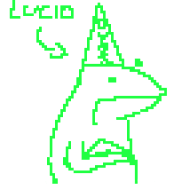A Deck of Cards
A Deck of Cards is a collection of cards, organized in a way that (performs?) the following axioms:
- The cards in the deck must be ordered in an unambiguous, non-cyclical way.
- The deck must tolerate removal of cards, and should be built for the repeated removal of cards from it.
- Outside of the two cards at the start and end of the organization, the ordering of the cards within the deck should be difficult (or impossible) to detemine without inspecting its contents.
- The deck must tolerate re-ordering of the cards within it, or “shuffling.” This should be possible to do without revealing the new ordering of the deck.
Typically, decks are shuffled so that all cards are faced towards the floor (or, face-down), and ordered in a stack.
Properties of Decks
While not inherently luck-based, (as whoever is shuffling the deck could order them specifically rather than arbitrarily,) card decks tend to be used add random chance.
Decks of cards allow a uniquely flexible form of random chance for tabletop games. While most forms of luck (such as dice) necessitate some outside resource to give the result value, a playing card can include an explanation as to its effects on the card itself. Additionally, the mechanism’s variability can be modified mid-game, by removing or adding specific cards to the deck, as opposed to most forms of luck which have a set amount of possible results which cannot be directly modified (try flipping a coin with three sides).
A Standard Deck
The “standard” deck of cards in western games is a deck of 52 unique cards with the following properties:
- There are four “suits” which any given card can belong to: Hearts, Spades, Clubs, and Diamonds.
- There are thirteen “ranks” which any given card can belong to: The numbers between 2 to 10 (inclusive), Jack/Prince, Queen, King, and Ace.
- There are four cards belonging to every rank, of which each card belongs to a different suit.
- In some cases, two distinct “Joker” rank cards are also included, making the deck have 54 cards instead. They do not have a suit.
In most games, the cards’ suits do not affect their value directly, however their rank acts as a standalone indicator for a card’s value, increasing as you go “up” in number. (So, 2 < 3 < 4 < … < 10 < Prince < Queen < King < Ace.) In some games, the Ace instead is worth less than 1, or counts as both a 1 and a 14.
Jokers are often treated as “wildcards”, meaning that they can be treated as whichever rank and suit would be the most optimal to the Joker’s player at time of playing.
<- back to index